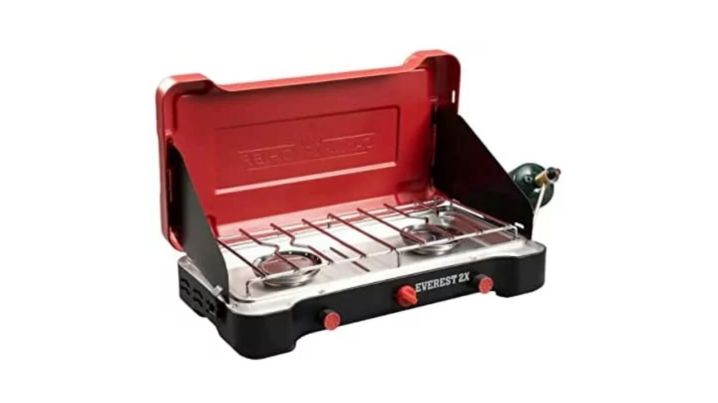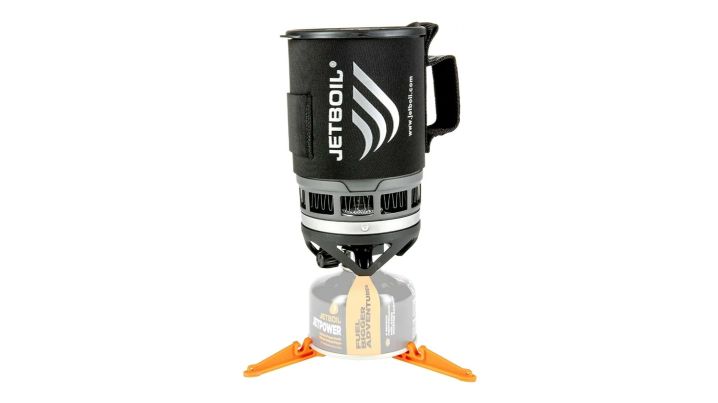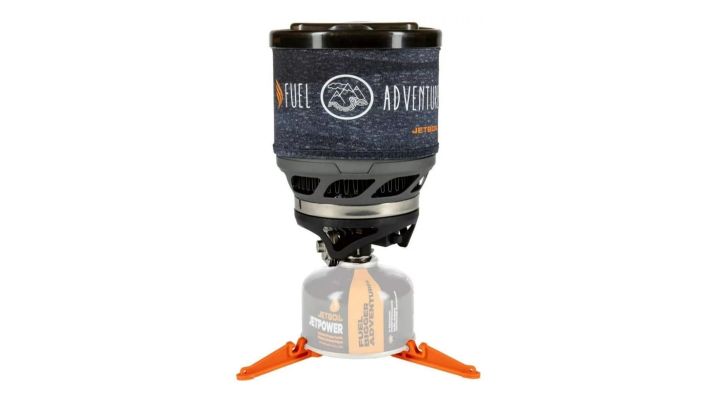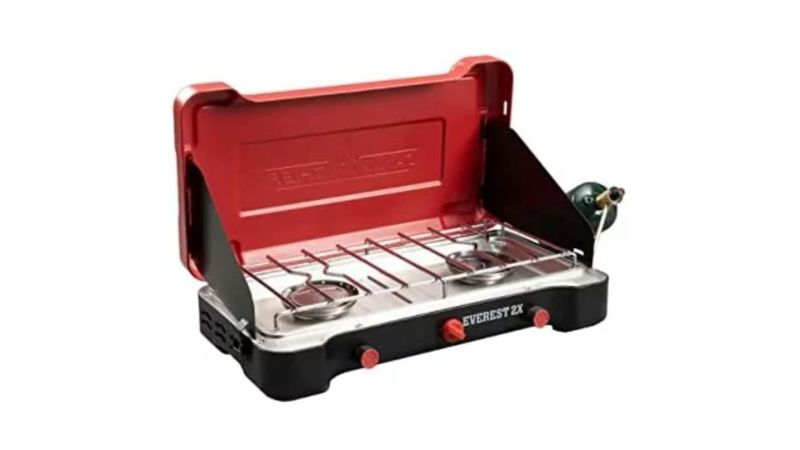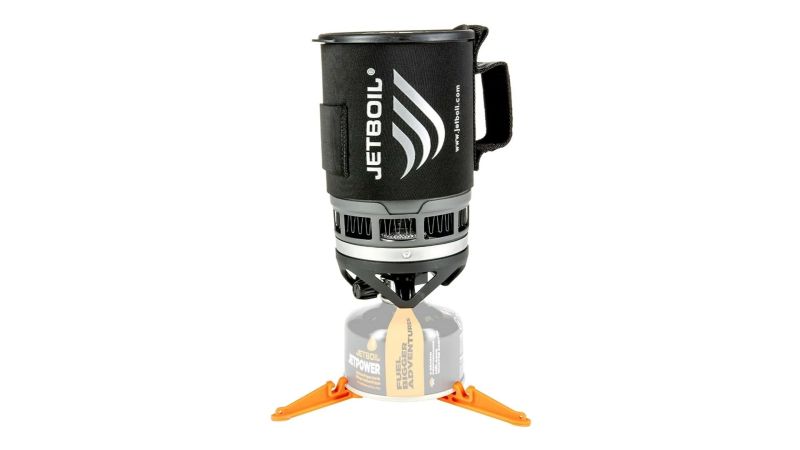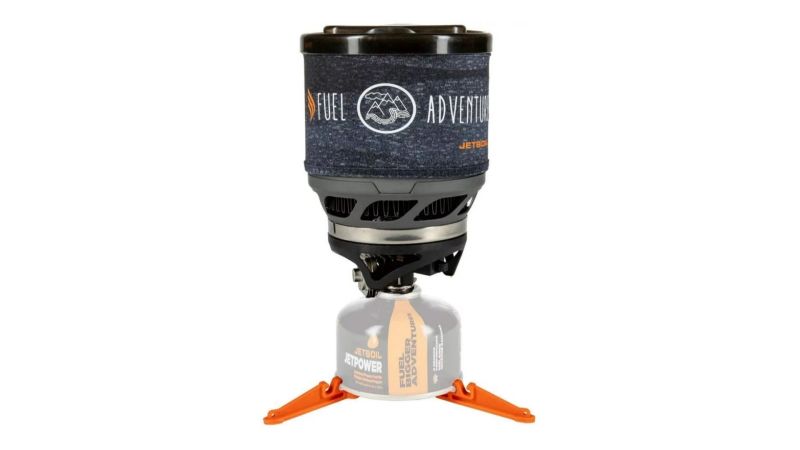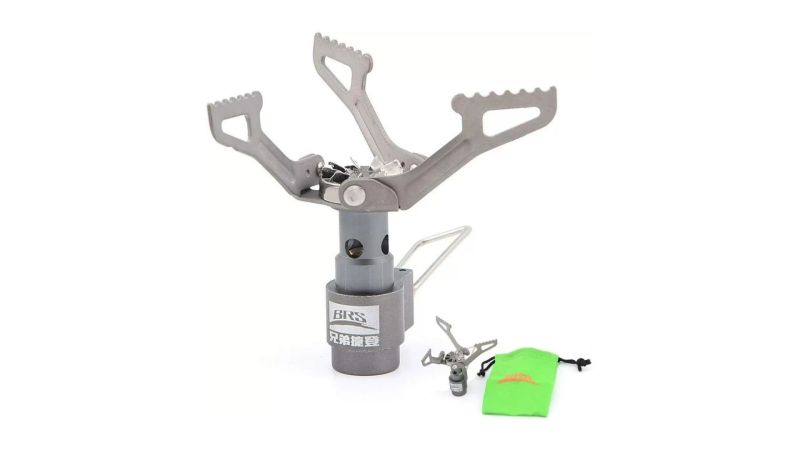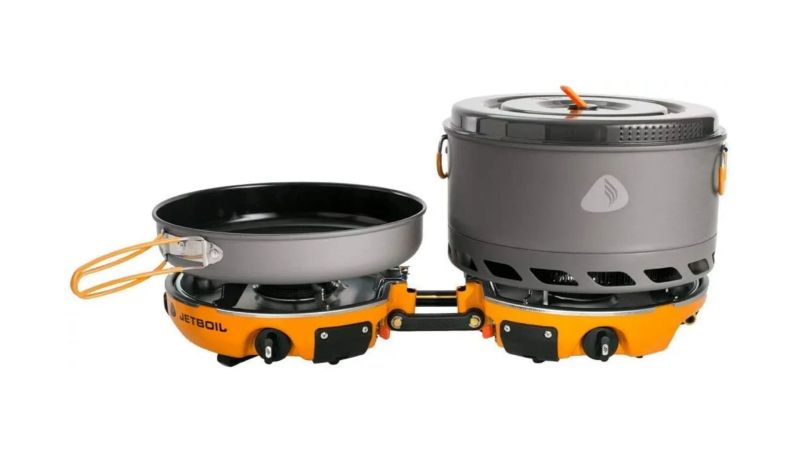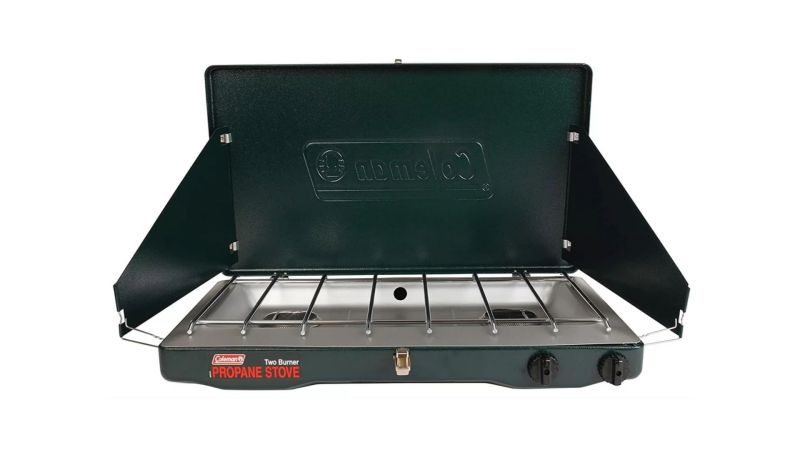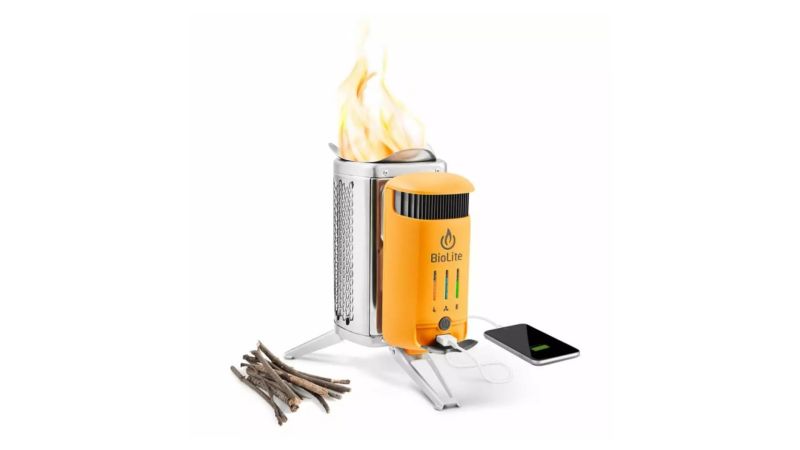We may earn revenue from the products available on this page and participate in affiliate programs.
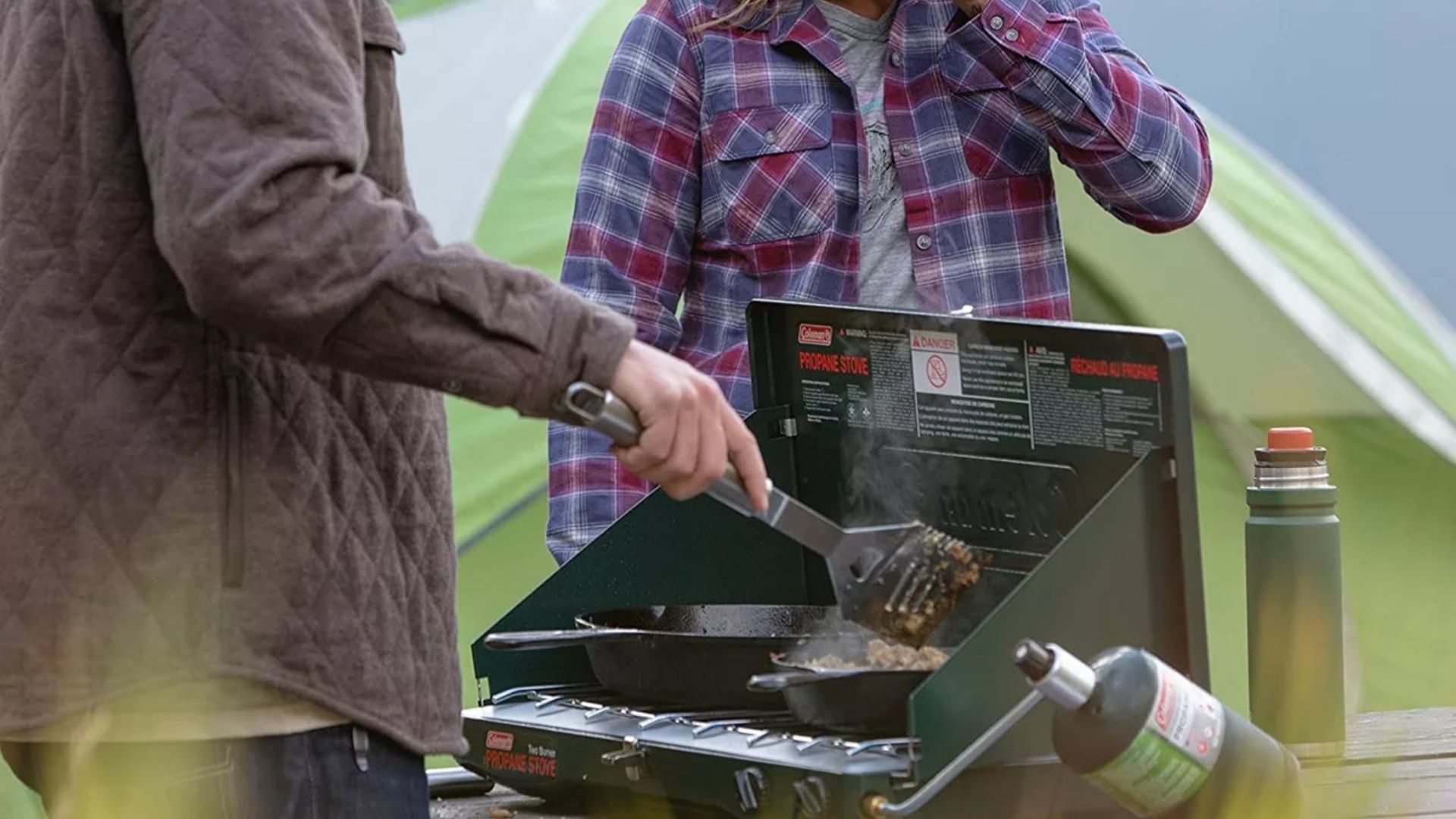
Camping stoves are an important part of any trip into the wilderness. Sure, you might be aware of uber-gram-conscious ultra lightweight hikers who advocate cold-soaking your food and lightening your pack by leaving your stove at home. Don’t listen to them. You’ll just end up at camp at the end of a long, tiring day and be faced with the chore of gagging down cold, soggy, unappetizing food. I tried it. It sucks.
A good camping stove is more than just a creature comfort or morale booster. In cold weather, it can save lives by generating warm fluids to give to hypothermia victims, and I’ve used mine over the years in this capacity more than once. There’s a wide array of stoves out there for everything from car camping to ultralight backpacking, so we did our homework to help you select the best camping stove.
Best Overall
Camp Chef Everest 2X
Best Value
JetBoil Zip
Editor’s Choice
JetBoil MiniMo
Best Ultra Lightweight and Cheapest Stove
BRS 3000T
Best Premium Camping Stove
JetBoil Genesis Basecamp System
Best Car Camping Stove
Coleman Classic Propane Gas Camping Stove
Most Innovative Camping Stove
BioLite CampStove 2+
Why you should trust us
I’m a 20-year Marine Corps veteran and I have more than 35 years of backcountry experience. I’m an avid long-distance backpacker, rock climber, and mountaineer who understands the value well-designed gear delivers, especially when your life depends on it. I don’t get paid by the manufacturers and have editorial independence. My editor leaves it to me to make recommendations and prints what I write. All of this enables me to provide you, our valued readers, with our unvarnished, honest opinions on the recommendations we make.
Types of camping stoves
Camping stoves come in two basic categories: ones you are willing to carry on your back for long distances and those you aren’t — backpacking stoves and car camping/basecamp stoves.
Backpacking
Backpacking stoves are typically lightweight single-burner units that may or may not have the ability to simmer. They are almost exclusively fueled by isobutane/propane canisters or pressurized liquid fuel like white gas. The former is more convenient to use and more efficient, and the latter performs better at altitude and in cold temperatures. These stoves are typically designed to boil water fast for rehydrating dehydrated food or cooking simple foods like pasta or couscous. Most are not suitable for large, heavy pots or large groups.
Car camping stoves
Car camping stoves resemble home kitchen stoves and are much larger, heavier, and more powerful than backpacking stoves. They are portable stove tops and come in one- or two-burner configurations with pop-up windscreens to make them more efficient. Car camping stoves are much more versatile and perform better in terms of temperature control when cooking. They’re also great for cooking for large groups.
Biofuel stoves
Biofuel stoves are generally stainless steel containers that serve as small fire pits and gain thermal efficiency through rocket stove design. The upside is that they don’t use fossil fuels. The downside is that you have to find or bring along the fuel, light a fire, do your thing, wait for it to cool down, and then pack it up if you are moving again. Also, some wilderness areas prohibit fires from time to time.
Key features of camping stoves
Power
Look for camping stoves that put out generous heat — about 6,000 BTUs for backpacking stoves and +10,000 per burner for car camping models.
Number of burners
Backpacking stoves almost always have one burner, while car camping stoves generally have two, but also come in one and even three burner models.
Fuel
There are three main types of fuel used in camping stoves: canister, liquid fuel, and alternative fuel. Canister stove burners screw onto threads on the top metal fuel canisters which contain propane or isobutane/propane mix. Liquid fuel stoves connect to refillable bottles that run on white gas and have to be hand-pumped to become pressurized. Alternative fuel stoves run on burning wood biomass. Less common backpacking stoves run on denatured alcohol or solid fuel.
Igniters
Check to see if the stove you are considering has an integrated Piezo-igniter or push-button spark producer. They’re super handy, especially if it’s wet or windy.
Benefits of camping stoves
Hot meals and drinks
This is especially important in late fall, winter, and spring. A hot meal at the end of the day in the wilderness is great for morale and helps keep you warm.
Portability and packability
Both backpacking and car camping/basecamp stoves are relatively lightweight and compact.
Easy to ignite and simple to operate
Most designs are simple with few moving parts and have integrated igniters or are easily and safely ignited with matches or lighters.
Pricing considerations
Budget
Consider any system under $75 a basic, entry-level stove. They’ll typically have one (or two) burners, perform OK, and may or may not have desirable features like adjustable flames and windscreens.
Mid-range
Most car camping and backpacking stoves run in the $75 to $150 range. At this price, you should be able to purchase a durable, well-designed stove that meets most users’ needs.
Premium
At $150 and up, you’re typically paying for nice-to-have features like integrated igniters, better-performing regulators, more efficient burners, and lightweight materials (especially in backpacking stoves).
How we chose our top picks
All the camping stoves in this review were selected based on personal ownership, hands-on inspection, interviewing other experts, and thoroughly reviewing manufacturers’ specifications. We take our time to get to know the strengths and weaknesses of each item and also check out the reviews of other experts just to make sure we’re not missing anything.
FAQs on camping stoves
You’ve got questions, Task & Purpose has answers.
Q. What stove is best for cooking actual food?
A. The stove that is best is one that you can get a proper pot or pan on top of, has sufficient BTU output, can simmer, and has enough of a flame distribution to avoid hot spots and scorching. Generally, these are car camping/basecamp stoves.
Q. What is the most user-friendly stove?
A. Most stoves I’ve inspected are pretty simple. For backpacking stoves, I prefer the integrated canister stoves like the JetBoil MiniMo and Zip. For car camping stoves, I prefer the two-burner three-sided windscreen models like the Camp Chef Everest 2X or Coleman Classic. In almost every case, someone has done a YouTube video on how to operate them.
Q. I’m going to travel. Which type of stove would be best?
A. It depends. If traveling by foot and backpack, get a backpacking stove. By car? Then get a car camping stove. If by air, check to see what the airline will allow aboard and what fuels are available at your destination. They typically don’t let you fly with fuel.
Q. Are multi-fuel stoves difficult to use?
A. Not typically. Some require you to change a small part of the burner depending on the fuel. If so, it’s not hard.
Q. My child is doing the Duke of Edinburgh Award. What stove would be best?
A. Ok, I didn’t want to, but I quickly researched this, and don’t fully understand what this event is about. I saw kids with backpacks on the website, so keep it small and simple like the JetBoil Zip. That is if you like them. If not, get them the biggest, heaviest stove to carry around.
Q. What is the fastest boiling stove?
A. For backpacking, the JetBoil Zip is hard to beat. Also, check out the MSR PocketRocket Deluxe. For car camping stoves, check out the Camp Chef Everest 2X.
Q. Can you use a camping stove indoors?
A. I don’t advise it, especially not inside a tent. You could asphyxiate, which is bad. These stoves put out carbon monoxide which can kill you if you inhale too much of it.
Q. How do I attach a propane tank to a camping stove?
A. Almost all just screw on.
Q. How long does camp stove fuel last?
A. It depends. The more BTUs it puts out, the more fuel it uses.
Q. Can you use a camping stove inside a tent?
A. No. We do NOT recommend this as they put out carbon monoxide, which is colorless and odorless and can kill you or give you brain damage. Also, your tent could catch fire and you could burn to death — a horrible, melted nylon-coated, flaming death.
Our gear section
Joe Plenzler is a Marine Corps veteran who served from 1995 to 2015. He is a backcountry expert, long-distance backpacker, rock climber, kayaker, cyclist, wannabe mountaineer, and the world’s OK-est guitar player. He is currently section-hiking the Appalachian Trail with his partner, Kate Germano. He supports his outdoor addiction by working as a human communication consultant, teaching at the College of Southern Maryland, and helping start-up companies with their public relations and marketing efforts.
